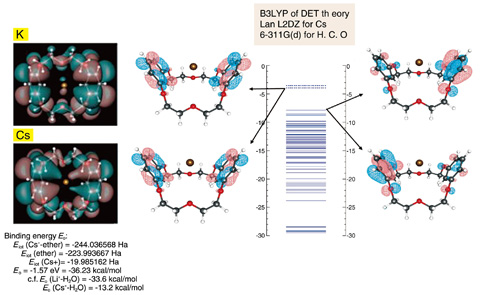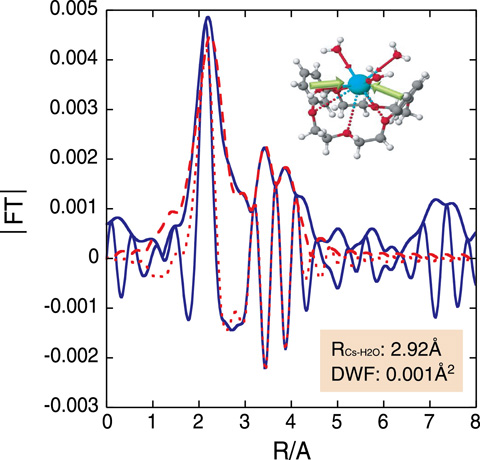
Fig.1-30 Molecular design concept of crown ether

Fig.1-31 The Cs(I)-DB20C6 complex is formed by electron donation from benzene π to Cs+ 5d(and 4f) orbital

Fig.1-32 Radial structural function of Cs-DB20C6 complex and Cs-crown ether complex
Radioactive cesium (Cs) contamination occurred in the environment owing to the accident at the TEPCO’s Fukushima Daiichi NPS. Clay minerals adsorbed radioactive Cs; in order to recover this radioactive Cs, continued development of new materials and new methods will be required. Previously, it was established that crown ether is one of the most popular absorbents for alkaline metals such as Cs.
In this study, we conducted the following: (1) development of new crown ether, (2) evaluation of absorption properties of new crown ether for alkaline metals, and (3) field investigation of the new crown ether in Fukushima. The development of a new Cs-selective adsorbent used potassium (K)-selective 18-crown-6-ether as a starting compound. The design of the new crown ether was conducted with the aim of extending the crown size of the crown ether in order to unite it with the ion radius of Cs and promoting the complexation properties of the crown ether over those of Cs (Fig.1-30). Moreover, chemical bonding properties between Cs and six oxygen atoms of the crown ether were evaluated by MO calculation. The results of the MO calculations indicate that dibenzo-20-crown-6-ether (DB20C6) is capable of identifying the ionic size of Cs. Furthermore, it was also established that the pi electron of the benzene ring of DB20C6 and the d-f hybrid orbital electron of Cs were combined (Fig.1-31). Although Cs made an orbit of d-f hybrid orbital, it did not exist in sodium (Na) or K, which are some of the most common alkaline metals in the environment. For the interaction between the d-f hybrid orbital electron of Cs and the pi electron of the benzene ring of DB20C6, DB20C6 isolated Cs when high concentrations of Na and K existed in the same system. According to the results obtained by EXAFS measurements in SPring-8, the bond distance of Cs-O(OH2) in the DB20C6-Cs complex is 0.05~0.1 Å shorter than that of Cs-O(OH2) in a CsCl hydrated complex (Fig.1-32). This result indicates that the DB20C6-Cs complex exhibits a strong capability to draw water molecules compared to Cs.
As part of the field examination in Fukushima, we also developed a tornado adsorber tower and conducted sampling in Iitate village. The combined use of DB20C6 and the adsorber tower allowed removal of the water-soluble radioactive Cs from agricultural water with about 100% efficiency. The adsorbent consisting of DB20C6 can be incinerated completely, in contrast to inorganic materials such as zeolite. Therefore, the volume of radioactive waste (such as contaminated soil) could be drastically reduced by the use of an organic adsorbent based on DB20C6.
The present study was sponsored by the Ministry of Education, Culture, Sports, Science and Technology of Japan (MEXT).